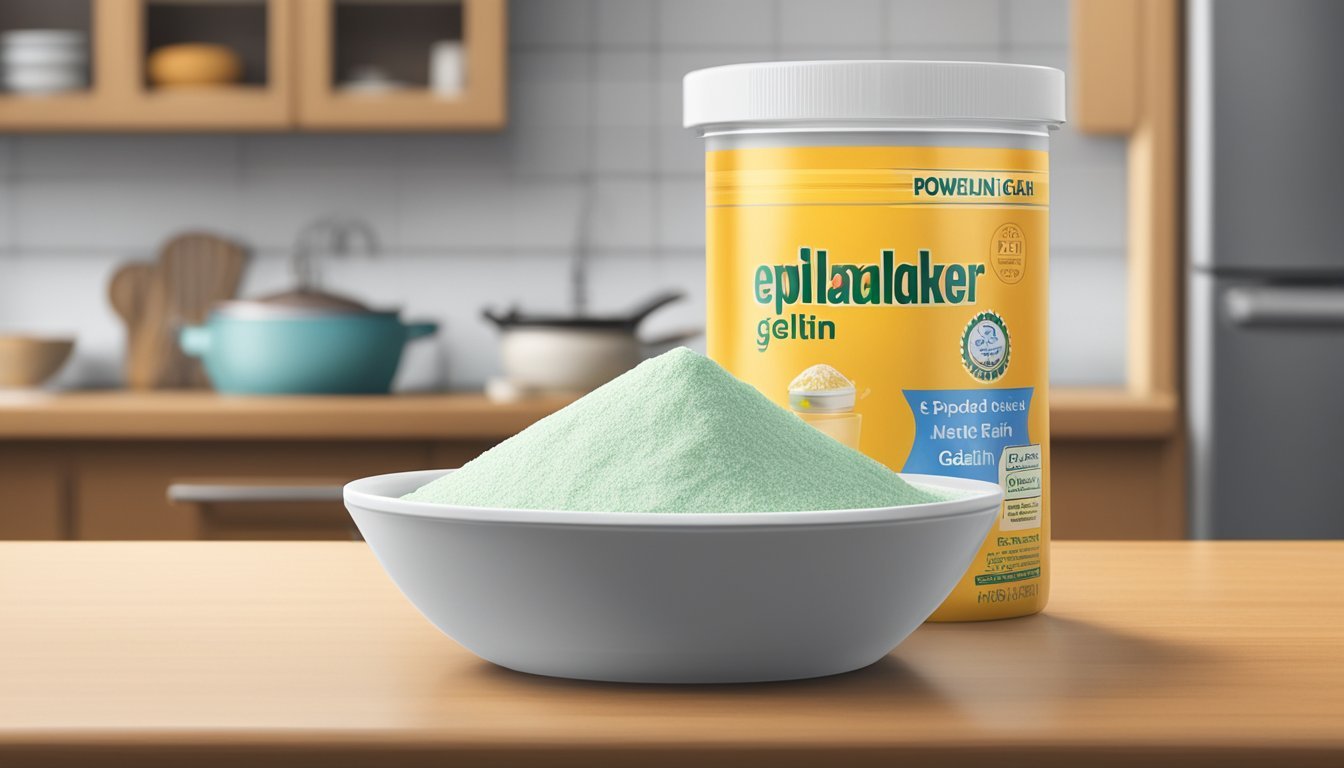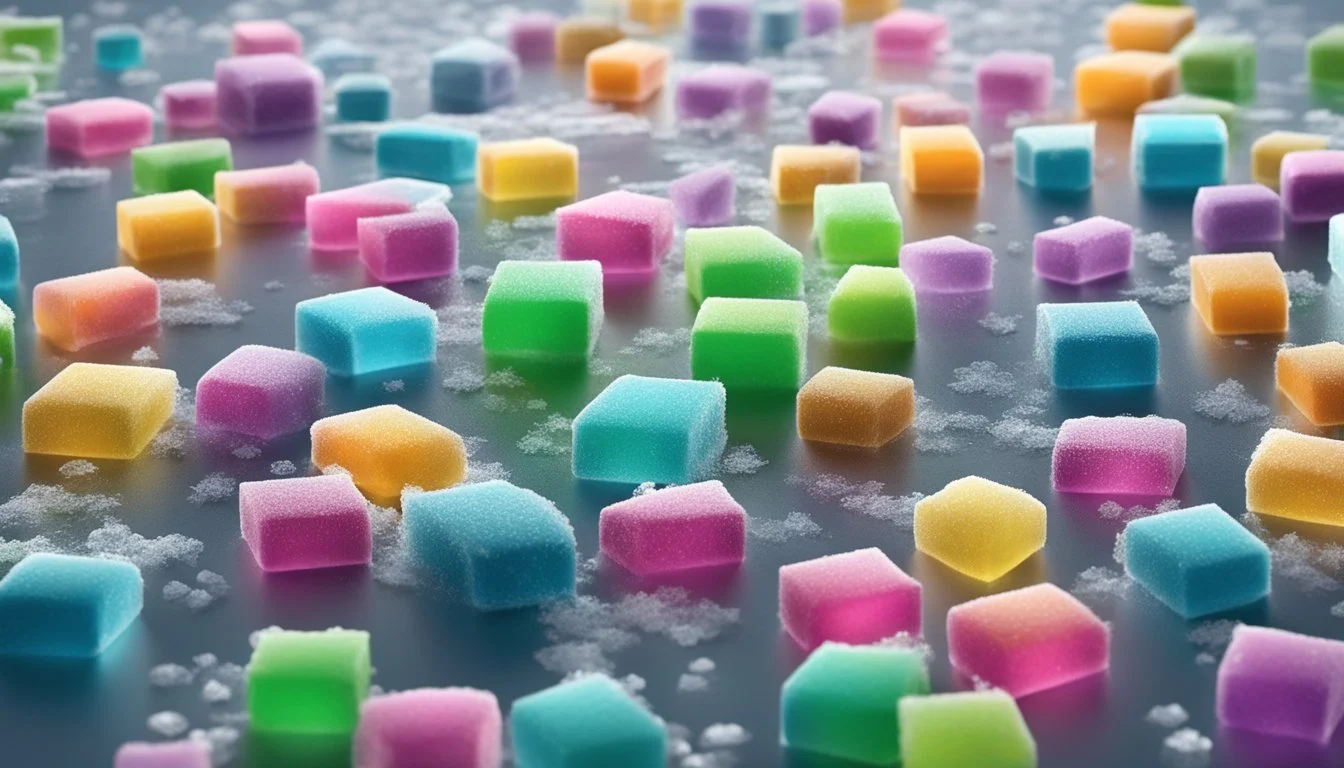Does Powdered Gelatin Expire?
Shelf Life and Storage Tips
Powdered gelatin, a staple in many kitchens, has an expiration date; however, it can often be used well past this date if stored properly. Keeping it in a cool, dry place and in an airtight container can significantly extend its shelf life. This means it can remain effective for creating delicious recipes and intricate food presentations long after the date on the package has passed.
When stored appropriately, powdered gelatin's quality can be preserved, making it a versatile ingredient in various culinary and non-food applications. The label's expiration date primarily indicates peak quality rather than safety, offering flexibility for those who keep their pantry well-organized.
The indefinite shelf life of dry gelatin, under optimal conditions, makes it a valuable component in both professional and home kitchens. Whether it's used for making desserts, jellies, or even in gardening, understanding its longevity can maximize its utility and reduce waste.
Understanding Gelatin
Gelatin is a versatile ingredient widely used in culinary applications. Derived from animal connective tissues, it provides unique gelling properties essential in various recipes.
Composition and Properties
Gelatin primarily consists of collagen, a protein sourced from animal connective tissues like bones and skin. It contains various amino acids, including glycine and proline, which contribute to its gelling abilities.
Being tasteless and odorless, gelatin blends well with other ingredients, enhancing both texture and stability without altering flavor. Gelatin powder dissolves in hot water and, upon cooling, forms a semi-solid gel, showcasing its distinctive gelling properties. This transformation is what makes it indispensable in numerous culinary applications.
Culinary Applications
Gelatin is widely utilized in both sweet and savory dishes. In the culinary world, it is essential for creating gelatin desserts such as jelly, gelatin snacks, and gelatin-based candies like gummies and marshmallows.
It stabilizes mixtures, which is crucial in recipes for desserts and certain savory dishes. It helps maintain the desired structure in various forms, from creamy parfaits to clear aspics.
In addition to desserts, gelatin is used in cooking as a thickening agent in sauces, soups, and broths. Its unique properties lend a smooth finish and mouthfeel, enhancing the overall texture and presentation of culinary creations.
Shelf Life and Expiration
Powdered gelatin has a surprisingly long shelf life when stored properly, but it's important to understand how to determine its expiration and the factors that affect its longevity.
Determining Expiration
Powdered gelatin usually comes with a best-by date or expiration date printed on the packaging. Shelf life typically extends well beyond this date if the gelatin is stored correctly.
Even though the official expiry date may pass, powdered gelatin often retains its potency and safety for years.
To assess whether it is still usable, check for changes in texture, smell, and color. Expiration dates are more guidelines than strict rules for this product.
Factors Affecting Longevity
Proper storage conditions are crucial for maintaining gelatin’s long shelf life. Keep it in a cool, dry place, away from moisture, light, and extreme temperatures.
Humidity can cause gelatin to clump and degrade faster.
Temperature fluctuations should be minimized to prevent loss of quality. Using an airtight container or leaving it in its original packaging helps protect against environmental factors.
These measures ensure that even past the marked date, powdered gelatin can be safely used in many applications.
Proper Storage Techniques
Proper storage of powdered gelatin is crucial to maintain its quality and extend its shelf life. Key strategies include storing the product in cool, dry places and using airtight containers to prevent moisture and heat exposure.
At Home
When storing powdered gelatin at home, keep it in a cool, dry place away from heat and direct sunlight. The pantry is an ideal location as long as it remains consistently dry.
It’s essential to use an airtight container, preferably made of glass, to safeguard against moisture and contaminant exposure. For added protection, opt for a dark container which can help block light, preserving the gelatin’s potency.
Label the containers with the purchase date and the estimated expiration to track its freshness effectively. Room temperature storage is sufficient, but if higher temperatures are a concern, the refrigerator can serve as an alternative location.
Preventing Spoilage
Preventing spoilage involves more than just proper placement. Moisture is the primary enemy of powdered gelatin. Airtight containers are critical as they keep out moisture that can lead to clumping and spoilage.
Store unopened gelatin in an airtight container once the original packaging is opened. For long-term storage, consider using vacuum-sealed bags to remove air entirely.
Avoiding temperature fluctuations is also vital. These fluctuations can create condensation inside containers, promoting spoilage. Therefore, keep gelatin in a consistently cool area, avoiding proximity to stoves or ovens.
Lastly, ensure gelatin is kept away from strong odors, which the granules can absorb over time, compromising the flavor.
Signs of Spoilage
Identifying signs of spoilage in powdered gelatin is crucial for ensuring safe and effective use in culinary applications. Key indicators include visual and sensory changes, as well as potential health risks associated with consuming expired gelatin.
Visual and Sensory Clues
Expired gelatin often exhibits noticeable changes in appearance and texture. Color changes, such as darkening or unusual discoloration, can be a sign of spoilage. Clumping or a gritty texture indicates that the gelatin may have been exposed to moisture.
The gelatin’s odor can also be a reliable indicator. Fresh powdered gelatin should have a neutral smell. A sour or off-putting odor is a strong sign that the product has gone bad. Additionally, the presence of mold on the powder is an unmistakable sign that it should be discarded.
Health and Safety Considerations
Using spoiled gelatin can pose several health risks. Although consuming expired gelatin typically won't cause immediate harm, it can lead to digestive issues. Spoiled gelatin is prone to bacterial and mold growth, which can be particularly harmful if ingested.
To ensure safety, it is important to store gelatin in a cool, dry place and properly seal its packaging. Materials like glass or dark, airtight containers help prevent exposure to moisture and contaminants. Keeping track of the expiration date and labeling containers with purchase dates also aids in maintaining the product's safety.
Usage and Quality
Powdered gelatin is a versatile ingredient used in various culinary applications. Its usage and quality can significantly impact the success of recipes, influencing factors such as texture and taste.
Effect on Recipes
The texture and taste of prepared gelatin rely heavily on its gelling properties and potency. When fresh, it ensures a firm and consistent set, essential for desserts such as molded gelatin or homemade gelatin snacks.
Over time, the gelling abilities may degrade, leading to a weaker set and less elasticity. This can affect the final dish's consistency, making it more watery or less cohesive. In turn, flavor can also diminish, which impacts the overall taste experience of ready-to-eat gelatin or other gelatin-based dishes.
Assessing Efficacy
Assessing the efficacy of powdered gelatin involves checking its freshness and strength. Fresh gelatin should have a neutral smell and dissolve smoothly without clumping. If the powder has clumped or developed an off smell, its properties are likely compromised.
Testing its gelling abilities by preparing a small batch can provide a practical evaluation. If the gelatin sets firmly and quickly, it retains its quality. If the set is weak or inconsistent, the potency is likely reduced, affecting the overall efficacy in recipes, from cooking applications to the creation of homemade gelatin-based products.
Freezing Gelatin
Freezing gelatin, whether in powdered form or prepared dishes, greatly affects its texture and consistency. Understanding how to store and reuse frozen gelatin is crucial for maintaining its quality.
Freezing Powdered and Prepared Gelatin
Freezing powdered gelatin is generally not recommended. Exposure to moisture during freezing can cause the powder to clump, compromising its functionality. It's best to keep it stored in a cool, dry place at room temperature.
When it comes to prepared gelatin dishes, freezing can alter their texture and flavor. Gelatin-based desserts or foods often lose their original structure once thawed. This change in consistency can make the gelatin difficult to work with. However, some specific gelatin products, like gelatin Popsicles, can be successfully stored in the freezer for up to two years without significant quality loss.
Thawing and Reusing
When thawing frozen gelatin, it’s best to transfer it from the freezer to the refrigerator. This gradual thawing helps maintain a more consistent texture and better flavor.
Care should be taken not to introduce any extra moisture during the thawing process. For example, keeping the container tightly sealed can prevent condensation from affecting the gelatin.
Once thawed, inspect the gelatin for any significant changes in texture or taste. Some minor changes are normal, but if the gelatin has compromised its consistency, it might not be suitable for use in recipes that require a firm gel.
While frozen gelatin can be reused, integrating it into dishes that do not rely heavily on water-based textures is advisable.
Specialty Forms of Gelatin
Gelatin comes in various forms, each with its unique properties and uses. This section discusses sheet gelatin and flavored varieties, focusing on their characteristics and applications.
Sheet Gelatin
Sheet gelatin, also known as leaf gelatin, is a form favored by professional chefs for its precision and clarity. It is available in various strengths, often denoted as bronze, silver, gold, and platinum.
Properties:
Clarity: Provides a clearer finish compared to powdered gelatin.
Consistency: Ensures uniform gelling and dependable results.
Texture: Delivers a smooth, consistent texture in dishes.
Usage:
Recipes: Common in desserts like panna cotta, molded salads, and aspic.
Preparation: Must be soaked in cold water before use to soften and then dissolved in hot liquid.
Flavored Varieties
Flavored gelatin, often known by the brand name Jell-O, is pre-sweetened and available in a range of flavors. It is widely used in home kitchens and casual desserts.
Properties:
Flavor: Comes in many fruit flavors like strawberry, lime, and orange.
Convenience: Pre-measured and easy to use, suitable for quick preparations.
Texture: Provides the same gel consistency as unflavored types.
Usage:
Recipes: Ideal for simple desserts, layered gelatin dishes, and fun, kid-friendly treats.
Preparation: Typically mixed with hot water to dissolve and then chilled to set.
Benefits:
Variety: Allows for creative culinary applications with different colors and flavors.
Accessibility: Easy for home cooks to achieve professional results with minimal effort.
Each form of gelatin offers unique qualities that cater to specific culinary needs, making it an indispensable ingredient in various recipes.







